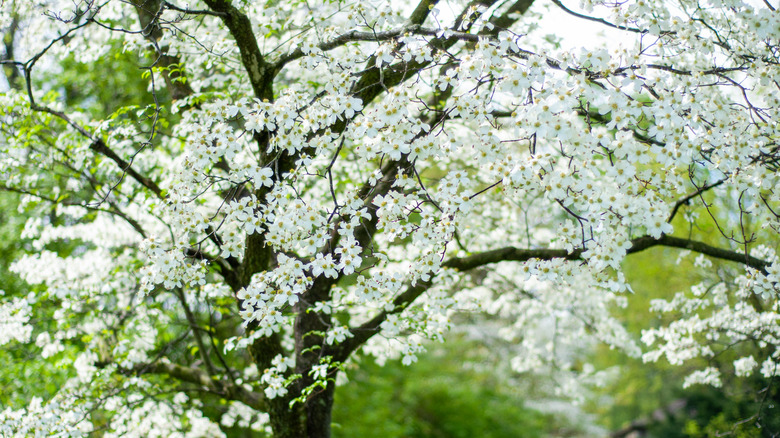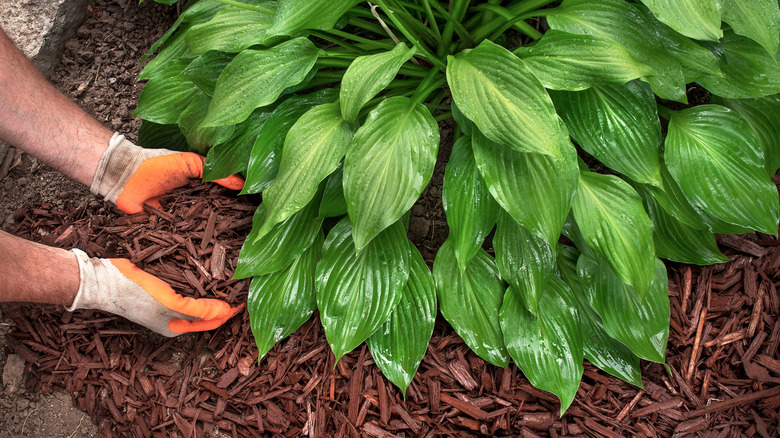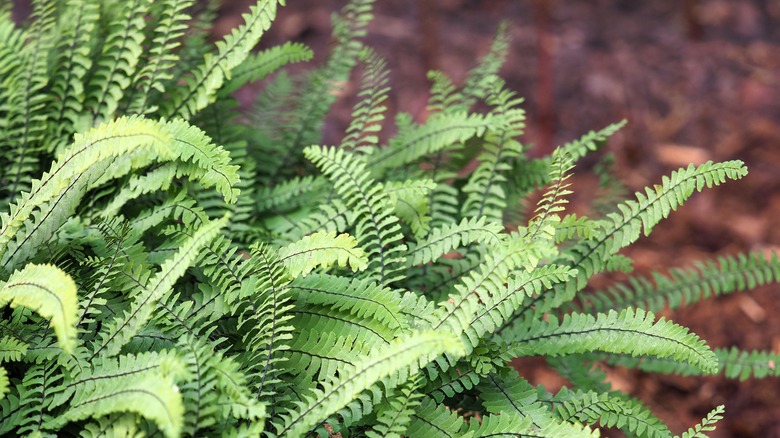The Best Companion Plants To Grow Under A Dogwood Tree
Popular along the east coast of the United States as well as in other areas, the showy flowering tree called the dogwood blooms beautiful buds in the spring. Grown best in USDA hardiness zones 5 to 9, these deciduous trees are prized for their striking beauty, with clusters of white or pink bracts that create a stunning display and leaves that turn vibrant shades of purple, orange, and red in the fall. Growing a dogwood tree in any space helps create a lush landscape, but to maximize all this beauty, don't leave the space underneath the tree bare. If you want to fill in that area, consider hostas or ferns, two pretty perennials that thrive under the same conditions as dogwood.
Those environmental conditions include acidity of soil, amount of acceptable shade, and soil types. For example, since the flowery tree requires well-draining, slightly acidic soil with a pH level between 6 and 7, plants nearby should need similar requirements. Categorized as an understory species, the trees also prefer partial shade themselves, and they won't do well when exposed to high winds or direct afternoon sunlight. That means anything below the tree will need to thrive in high acidity and lots of shade, too. Both hostas and ferns have high shade tolerance and do best in higher pH soil levels, making them great companion plants for dogwoods.
Why you should grow hostas under your dogwood trees
Hostas, which are low-maintenance perennials that can make your garden look fuller, thrive in USDA hardiness zones 3 to 8. Because dogwoods thrive in zones 5 to 9, the best type of hosta for underneath this tree would be one that does well in zones 5 to 8. Hostas also do well in draining, slightly acidic soil that has a pH level between 6.5 to 7.5. They can stand a bit more acidity, so both plants will do well from the 6 to 7 pH range. Importantly, hostas do well without full sunlight, so they can be placed directly underneath a tree's canopy. Since they can grow 1 to 3 feet tall, they can add a sculptural element to your garden's final look.
Plant the hostas in early spring or early fall near the base of your tree to brighten your garden for months. Be careful not to disturb the shallow roots of the dogwood when digging. While hostas are best known for their showy leaves, some types will also bloom in mid-summer after the dogwood blooms have peaked in spring, giving your yard more interest. When selecting which hosta you'd like in your garden, know they come in a wide variety of shapes, sizes, and textures that you can carefully curate to complement your dogwood's habitat to your taste.
Why ferns are excellent companion plants for dogwood trees
Just like hostas, ferns come in a wide variety of shapes, shades, and growing habits. Maidenhair fern, for example, will add a fine texture to a landscape, while Japanese painted ferns clump in clusters that appear in silver and burgundy shades. A Pyrrosia or deer tongue fern will slowly spread under a tree, and they do best on a slope. Ferns will also do remarkably well under the canopy of dogwood, and there are several key reasons this pairing works harmoniously. Many ferns do notoriously well in shaded areas where other plants cannot thrive. They are also typically hardy in USDA growing zones 4 through 8, which means zones 5 to 8 are great for the dogwood and fern companionship. Because they tend to prefer acidic levels, ferns align well with dogwood, and a pH level of around 6 is best for both species.
Depending on the fern type you select, either spring or fall planting may be best. If planted in the fall, their roots will have time to take hold before the abundance of leaf growth erupts in warmer months. Because both dogwoods and ferns like well-draining soil, ensure the dirt isn't dense or clay-like. Plan for most mature plants to be 1 to 3 feet tall and wide, and watch as they add lots of interest underneath your dogwood.


